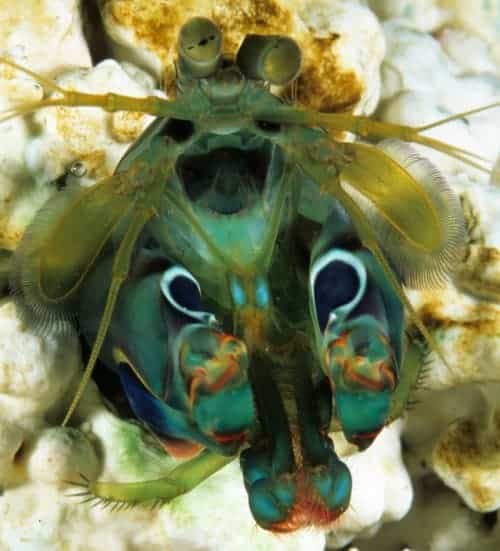
Put on a pair of polarized sunglasses and your view of the world around you can change dramatically. A bright sky will darken, giving you a better view of objects on the horizon, and the glare from the surface of a pond will vanish, allowing you to peer into its depths. Your vision is improved because the sunglasses filter out much of the scattered sunlight that has become polarized as it travels through the atmosphere and reflects off objects around us.
Scientists have known for at least 50 years that some insects, crustaceans, spiders and other anthropods can “see” light of different polarizations — without the need for any artificial aids. These animals can even use this ability to navigate, find food and evade predators. But biophysicists had thought that this ability was only true for linearly polarized light, in which the electric-field vector points in a fixed direction.
Such animals, it was thought, could not detect circularly polarized light, in which the electric field vector rotates in a clockwise or anticlockwise direction. This belief was based mostly on the observation that as there are very few sources of circularly polarized light in nature, detecting it would not be of much use and it would be unlikely that any animal had evolved the ability to do so.
Simultaneous detection
Now, Sonja Kleinlogel of the Max Planck Institute for Biophysics in Frankfurt and Andrew White of the University of Queensland have carried out experiments on the eyes of mantis shrimp that show how the crustacean can detect simultaneously both circular and linear polarization of light (PLoS ONE doi:10.1371/journal.pone.0002190).
This new analysis backs up a report made earlier this year by Kleinlogel and colleagues in Australia and the US that live mantis shrimp behave differently when exposed to light of different circular polarization (Current Biology 18 429).
In their new experiments, Kleinlogel and White made a series of measurements on eyes that had been removed from mantis shrimp. These creatures have two spherical compound eyes, each of which comprises hundreds of smaller eyes organized into three substructures — two hemispheres separated by a mid-band.
The team shone light of different linear and circular polarizations on the three substructures and measured the electrical response of the photoreceptors within. They discovered that the photoreceptors in the hemispheres respond to light with different linear polarizations, while the mid-band was sensitive to circularly polarized light.
An ‘artificial mantis shrimp eye’ would give us a great opportunity to figure out what these little critters really perceive in their environmentSonja Kleinlogel, Max Planck Institute for Biophysics
Stokes parameters
As a result, the team claims that the shrimp can detect any possible combination of linear and circular polarization. Mathematically, this means that the eye is sensitive to all of the six parameters that are required to define the polarization of light — the so-called Stokes parameters.
White told physicsworld.com that the mantis shrimp detects circular polarization in this mid-band region by first passing light through a biological cell that appears to act as a “quarter wave plate”. This is an optical device that converts circularly polarized light to linearly polarized light. The team believe that this light is then detected by cells sensitive to linearly polarized light.
This ability to visualize all types of polarization allows the shrimp to perceive very subtle changes in the polarization, claims the team, which could improve their view of their environment. “Some of the animals that the [mantis shrimp] like to eat are transparent, and quite hard to see in sea-water — except they’re packed full of polarizing sugars — which makes them light up like Christmas trees as far as these shrimp are concerned”, explained Kleinlogel.
Another team of researchers at Queensland have recently shown that light reflecting from mantis shrimp is circularly polarized, suggesting that the polarization vision is involved in the mating process.
Nick Roberts, who is a biophysicist at the UK’s University of Manchester, described the work as “persuasive”. He also pointed out that the team’s novel measurement and analysis technique, which involves using six measurements to define uniquely the response of different parts of the eye, was an important contribution to the understanding of polarized light vision.
Shrimp’s-eye view
Kleinlogel said that the team now plan to build an “artificial mantis shrimp eye” — a camera that would have a shrimp’s-eye view of Australia’s Great Barrier Reef, which is home to the crustacean. “This would give us a great opportunity to figure out what these little critters really perceive in their environment”, she said.



